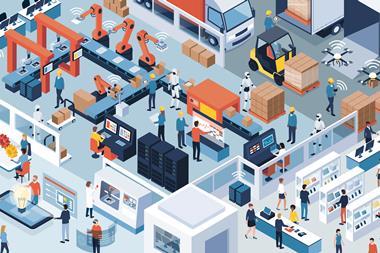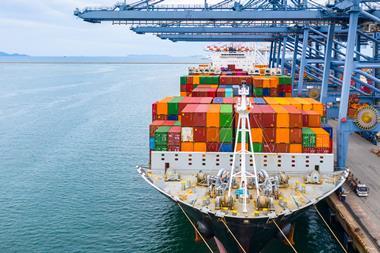How do you manage supply chain risk effectively in a world of constant disruption?
It is a rare risk professional who has emerged from the past few years completely with a business completely unaffected by supply chain disruptions.
The sources have been many and varied, including the US-China trade wars, the global pandemic, invasion of Ukraine by Russia, natural catastrophes, strikes, port closures, inflation and energy crisis, and other significant - sometimes unlikely - sources.
Remember, for instance, the grounding of the Ever Given in 2021 and the droughts in summer 2022 which disrupted hydroelectric plants in Norway and China?
What has become clear, as we emerge with battle scars from this extremely challenging period in history, is that the world is becoming even more unpredictable than ever before.
Geopolitical analysts debate whether we are seeing the emergence of a new, more polarised, world order and the end of globalisation as we once knew it.
And yet the world remains highly interconnected, with disturbances in one region crippling entire value chains and impeding production in places which, at first glance, appear to be entirely disconnected from the source event.
Turkey’s Iskenderun port
The devastating earthquakes in eastern Turkey and Syria have impacted air and sea terminals. Infrastructure damage and fires at the Port of Iskenderun are expected to impact around $679m of global trade, according to analysis by Russell Group, including disruptions to Iron and Steel exports.
Global shippers say they are planning to divert cargoes, but at the time of writing, the Ports of Mersin and Said were anticipating their own disruption from power outages and other bottlenecks.
The Iskenderun incident highlights a reoccurring issue in global trade, according to Suki Basi, Russell Group managing director, “whereby a single point of failure – such as a port closure – can have ripple events across supply chains”.
And it is no longer just breakages within physical supply chains that are impacting our ability to run our businesses.
As we become ever-more reliant on digital suppliers, disruptions from cyber attacks and cloud outages are just as likely to interrupt the flow of day-to-day business activities as a port or factory fire, or a ship blocking the Suez Canal.
“You may think you have diversity in your supply chain because you have multiple companies to buy servers and hardware from,” says James Watts, managing director of Databarracks. “But, if all your suppliers are in turn dependent on a single distributor or vendor, risk is concentrated further up the chain.”
Investing in resilience
What is abundantly clear is that the old ways of approaching supply chain risk management are no longer practicable, according to Carolina Klint, risk management leader, Europe at Marsh.
This is because the relatively predictable business environment, which previously enabled companies to pursue incredible growth because they were able to focus on efficiency, has gone.
“It was a reliable supply chain and global trade was much more solid, and now we’re seeing these vulnerabilities, the environment is very unreliable and there are surprises every day of the week,” she explains.
“This means companies are looking to allow a bit more slack in the system, and to invest upfront because it gives them a bit more resilience. Companies are moving from that just-in-time approach to a just-in-case strategy.”
Klint thinks the fact companies are showing a willingness to invest upfront in resilience is an interesting development.
“It’s been one blow after another to supply chains. As a result, companies have recalibrated their sourcing strategies - also strengthening control of supply chains, including identifying alternative suppliers and stockpiling.”
Nearshoring moving ‘faster than expected’
Among the new trends in supply chain risk management is a shift towards onshoring, or nearshoring. As the world becomes more polarised, ‘friendshoring’ is another consideration, with firms ensuring their suppliers are located in countries they are unlikely to experience friction with.
The tech giant Apple, for instance, has been criticised for putting all of its ‘eggs in one basket’ by relying so heavily on mainland China for critical components. Over the past year it has begun to move some of the manufacturing of its iPhone 14 to India from China.
Other major brands, including GM and Boeing, are also in the process of restructuring their global supply chains and bringing suppliers closer to home.
Some are going a step further and turning their back on the outsourcing model. “We are seeing vertical integration - companies that are acquiring suppliers or clients to get control of the whole chain,” says Klint.
Among those seeking to gain direct control over their supply chains include the growing number of auto companies buying up stakes in manufacturers of lithium-ion batteries so they can meet their green transition objectives.
This includes Porsche AG, which acquired shares in the US EV battery manufacturer Group14 Technologies, and took the lead in its latest $400m investment round as it expands its electric vehicle offering.
With many supply chains still in recovery mode, post pandemic, the next 12 months will continue to be a critical period. The impact of factory closures, border restrictions and overcrowded ports are still being felt within many industry sectors.
Skills shortages are an ongoing source of concern, causing delays to building and repairs and adding to inflationary cost pressures. Temporary housing solutions and diversification of suppliers may provide some relief and help reduce turnaround times, according to Sedgwick’s Imagine 23 report.
The good news, according to Klint, is that any upfront investments in supply chain resilience will have a positive impact. Just as an interconnected world introduces vulnerabilities into tought supply chains, so too do a few contingencies benefit everyone.
“It is complex, volatile landscape and we see that one risk will amplify and accelerate another risk - like a big bowl of spaghetti where if you pull one strand the whole thing moves. The upside is that investment in resilience works the same way. If you invest in resilience in one area, it has a spillover effect into other areas,” she says.
Find out more by registering for our StrategicRISK webinar on Supply Chain Risk on 22 February




















No comments yet